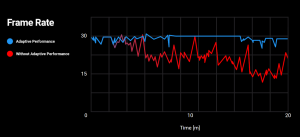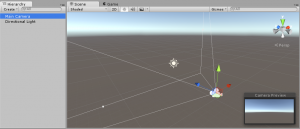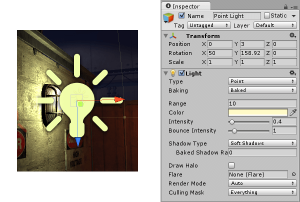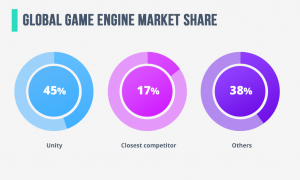Unity 2019 is Changing Video Game Development
Many video game development journeys start by answering the question, “Should we build our own in-house engine or use a pre-existing platform?” When choosing the second option, chances are you will decide to use Unity.
John Riccitiello, CEO of Unity Technologies, can best explain why they are so popular. In 2018, he visited TechCrunch Disrupt SF to speak about their video game development engine and how it prevails over the competition.
John stated that Unity has captured a large portion of the market, proven by the nearly 2 billion Unity games downloaded monthly.
Also, he added that their engine is compatible with over 25 platforms, including Android and iOS, Windows and MacOS, Oculus Rift, Nintendo Switch, and others.
This year, the company announced that Unity 2019 will include 283 new improvements.
This blog post aims to figure out how these new changes are going to affect game development, what makes Unity stand out from the competitors, and why Unity soft launches are so important.
Unity 2019 Update
Unity 2019.1 has a smorgasbord of new features available for developers, including touched-up graphics and lightings functions, artist toolbar and editor, mobile video game development, and code compiler. It provides general performance and workflow advancements as well.
The long-expected update includes functionality improvements that will be useful for graphics specialists, mobile game developers, and animators.
This is only the beginning. Unity is planning to continue their release stream by releasing Unity 2019.2 this summer and Unity 2019.3 in the late autumn.
Unity has also updated its Long-Term Support, which is aimed at those who want to produce their games by staying on a consistent version for a longer period. This new LTS does not include new features or functionality enhancements. Its update addresses issues with system crashes and includes only bug fixes.
Let’s see what exactly has been modified in the Unity engine and how these new changes are going to influence future development.
Workflow and Performance Improvements
Unity 2019 focuses on greater performance and an advanced editor workflow. Thus, a new engine version has been introduced with the new Shortcut Manager and SceneVis controls.
The other updates include high-performance multithreaded Data-Oriented Technology Stack along with the Burst Compiler.
How will these changes affect game development?
These workflow and performance changes will result in:
- Easily readable code that can be run on multiple platforms such as MacOS, Windows, Nintendo Switch, Android and iOS, etc.
- Video games launch faster compared to an object-oriented approach (unfortunately, Unity does not provide accurate figures)
- Able to create worlds with more complicated elements and simulations
Artist Tools Improvements
Unity remains focused on expanding its artist toolbar.
The company has now introduced an expanded Animation Rigging package. It enables game developers to add procedural movements on animated image skeletons in real time. It is now possible to manually create a character control rig hierarchy by applying predefined constraints from the library or generate custom ones with C#.
Additionally, the Timeline is now transformed into a validated signals package, which enables easier object interactions in the scene.
How will these changes affect game development?
Due to the artist tooling update, graphics specialists and developers will be able to:
- improve world interactions in the video game,
- have greater control over object animation, and
- make the movements of characters more human-like.
Graphics Improvements
In the 2019.1 version, Unity specialists recommend using the updated Lightweight Render Pipeline, which enables better graphics and can be utilized on mobile platforms, powerful consoles, and also PCs.
The update is also accompanied by High-Definition Render Pipeline and improvements to GPU Lightmapper functionality.
How will these changes affect game development?
These functionality modifications will make it possible to:
- achieve a cinematic look for characters in the game,
- emulate the way physical cameras operate in real time, and
- get higher performance and better image rendering.
Mobile Development Update
Unity 2019.1 also brings enhancements to mobile game development to avoid rebuilding app packages. Now, it has become possible to patch them.
Mobile Adaptive Performance has also been introduced in this release. It provides better thermals management capabilities and higher game management in real time. You can benefit from Mobile Adaptive by adjusting quality settings without overstressing the device.

How will these changes affect game development?
This Unity 2019 mobile game development update will result in mobile battery life preservation, which will extend gameplay time for a more enjoyable experience.
Developers will also have more control over the decisions made by the mobile operating system such as what to do to avoid throttling or when to run at high clock speeds.
Advantages of Unity Game Development
The competition for game development engines is tight. Despite the fact that companies such as Unreal Engine, Corona, GameMaker Studio, and others are fighting to maintain their positions, Unity remains a top performer, and for good reasons.

“Unity 3D is a powerful cross-platform engine that allows our teams to work and iterate quickly. Easy to start and hard to master, Unity is fun to use across developers of various skill sets. Multi-platform development, rapid evolution of the engine, development support and huge community make Unity 3D the engine of choice when we work on the next mobile game title,” comments Alexey Isaev, senior engineering manager at Innovecs.
Multi-Platform Portability
When developing video games with Unity, you are not bound to a single platform. The engine supports more than 25 platforms, including mobile (iOS and Android), Nintendo Switch, Windows, Oculus Rift, PlayStation, Xbox, and many others.
In comparison, Unreal supports 17 platforms, and GameMaker Studio only supports 12. This is one of the reasons why, at Innovecs Games, we primarily use Unity for game development.
Rich Asset Store
Compared to other asset stores, like Unreal, Unity’s is richer and contains more ready-made 3d models of characters and their surroundings, textures, and even sounds and particle systems. The store also includes different animation patterns, GUI generators, and, more importantly, editor extensions for AI management.
The asset store contains everything necessary for creating a top video game.
Intuitive Interface
Compared to other engines, Unity has a very intuitive interface. It allows users to seamlessly navigate through the system and easily find necessary tools for game creation. Additionally, due to a huge online community and in-depth product documentation, it is easy to find the answer to any emerging questions.
Unreal Engine lacks this user-friendliness. When working in the editor, there are endless pop-up windows. You can spend hours unsuccessfully searching for necessary information.
GameMake Studio has the same problem with the interface as Unreal and also provides poor editor functions.
Major Unity Game Development Peculiarities
No matter which engine you select, you should be aware of its primary characteristics and some key peculiarities.
Prerequisites for Using Unity
The requirements for using this engine depends on your purpose.
For game development, the minimal requirements are the following:
- OS: macOS 10 or 12+ and Windows 7 SP1+, 8, or 10
- GPU: DX10 (shader model 4.0) capabilities card
- CPU: SSE2
For playing games, the minimal requirements are the following:
- OS: macOS 10 or 12+, Windows 7 SP1+, and Ubuntu 16.04+
- GPU: DX10 (shader model 4.0) capabilities card
- CPU: SSE2
Programming Languages
Before using the engine, it is important to know which programming languages are supported .
Unity has three options: JavaScript, C#, and Boo. You select the language depending on the platform you want your game to run at. JavaScript and C# require no explanation.
Boo is much like Python. It is a CLI programming language that was used by Unity until 2014. Because of the small user base, the company stopped applying this language.
Project Structure
Projects in Unity include folders for the following items: temporary files, Library items, Assets, and ProjectSettings.
The Assets folder collects all game assets. This can be code, graphics elements, or audio. Every time you upload files, they go directly to this folder.
Then, the Library folder is created for anything imported from the Assets folder, like local cache storage.
The ProjectSettings folder includes all settings and the Temp folder contains temporary files.
Game Scenes
The scene is defined as a set of objects. Each scene may include different decorations, obstacles, environments, and other elements.
When creating a new scene, you will see that it contains default components such as directional light and a view of the camera.
The scene can consist of multiple levels. When repositioning the camera or changing the player’s place, a new scene level is created.
Be sure to save by clicking Ctrl+S from time to time to preserve all levels and components.

Unity Objects
Game objects are the elements that are visible in the scenes. Objects can be created by adding different components such as light, mesh filter, or mesh renderer.
Usually, the object has its Name, assigned Tag, and Layers. It also has the Transform property, which defines the size and position of the object on the scene.
Game objects are placed according to a system of coordinates: X (horizontal), Y (vertical), Z (depth of the screen).

Unity Video Game Soft Launch Value
Being aware of key Unity characteristics and how to develop your game with this engine does mean that it will be popular or successful among players.
After creating a ready-made product, it’s important to optimize and prepare it for release. The best way to check whether the game is going to fulfil your expectations is to soft launch it.
A soft launch is defined as a release to a limited audience. You choose the geography and number of beta users and provide them with access to the application.
Game Soft Launch Benefits
Soft launches have become popular among game developers because such a tactic provides a number of benefits:
- It allows identifying the first reaction of users to your project and define its weak points faster.
- It helps increase user retention, which is important for developers because 77% of all applications get deleted and only 15% of video games last for more than 1 month after download.
- It helps gather feedback on how your game runs on different devices.
- And one of the most important things: you can see whether the idea of your game is interesting for the audience.
Common Locations for Game Soft Launch
The geography for your game soft launch depends on your predefined target audience.

“The goal for a soft launch is to check a similar players behavior such as purchases or retention on a smaller scale before actually pushing the game in key geos. The location for soft launch depends on where you are going to release and operate the game. It can be Canada, Australia or Nordic countries,” comments Slava Taraskin, Head of Managed Accounts EMEA at Unity Technologies.
If your game is oriented toward major markets, it would be smart to launch the project in English-speaking countries such as US, which has 178.7 million mobile game players. Other locations include the following:
- Canada (however, it’s becoming expensive to soft launch there)
- New Zealand
- Australia
For the mobile game market, 97% of revenue is generated by Asian countries. Additionally, the minimal Cost-per-Install (CPI) here is $0,51. So, if your purpose is to soft launch the game to a wider audience, Asia-Pacific countries can be your choice:
- Indonesia
- India
- Singapore
- Malaysia
How to Measure Soft Launch Results
By soft-launching your Unity game, you expect to see some results to allow for smarter decisions before release. Here is what should be measured after the launch:
- User retention. Your task is to monitor user activity. Find the point where players leave the game and consider any potential causes. For example, if the user drops out on the 1st day in the game, you probably have to modify your tutorials. If the user drops out later, pay attention to the gameplay. See how to easily calculate it in our spreadsheet.
- Organic traffic. After the launch, you have to see how actively your game application is being downloaded. So, you need to measure the number of downloads to see if they meet expectations.
- Viral loop. Create a viral loop to see how actively players are telling their friends about your game. You can do that by implementing referral programs or allowing users to share their game results in social media, and so on.
- Lifetime value. To see how profitable the game can be, calculate the lifetime value of the users by adding together cost-per-install and all in-game purchases. Then, compare the sum you invested with the sum of LTV. After that, you will see whether your game brings money. You can use the online calculator to identify the LTV.
- Bug reports. Real users are the best game testers. Simply collect feedback and polish your game based on users’ comments.
Unity is the Present and Future of Video Game Development
The market share of the Unity engine is 48%, whereas its closets competitors (Unreal Engine, GameMaker, and CryEngine) have only 17% all together. This percentage clearly demonstrates the preferences of game developers.

Unity provides possibilities for developing 3D games, instant games, AR and VR entertainments, games for mobile/PC/consoles. The engine also suits the creation of AAA games such as Ori and the Blind Forest, Wasteland 2, Katamari Damacy Reroll, and others.
The engine stands out of the competition by providing rich asset store items, all-in-one editor, and easily navigable interface.
At Innovecs, our teams choose Unity 3D to build games that the players will love. We use the latest technologies and follow all Unity modifications and updates to deliver the best products.
Unity 2019.1 is the first release of the year and has brought a lot of new improvements. Unity 2019.2 and 3 versions are yet to come and will change the way games are developed. Let’s wait and see.